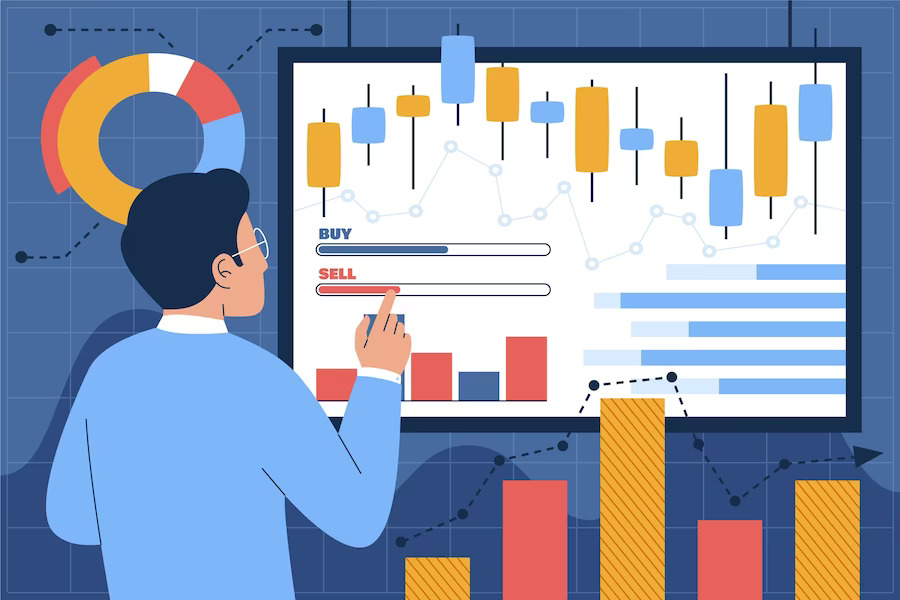What Are Major Reasons Why Stock Forecasting Can Fail
Many stock forecasting models fail because they need to be better thought through, poorly implemented, or are constructed using unrealistic assumptions about the future. There are also many other causes for the failure of a stock forecast that have nothing to do with data mining. To make an accurate forecast, a company’s leadership team and senior management need to understand what is driving their business and then be able to take effective action based on this understanding.
Why Stock Forecasting Can Fail
A company’s stock price estimates its future cash flow or the current value of all the cash it is anticipated to generate. However, the unpredictable future makes it possible for stock values to shift significantly even though a company’s fundamentals remain unchanged. Consider a scenario in which a business reports higher-than-anticipated profits while maintaining its forecast for future earnings growth. In that instance, even though there hasn’t been a fundamental shift in its outlook, its stock price might increase significantly.
What Are Major Reasons Why Stock Forecasting Can Fail
The Stock Market’s Complexity
Because of the stock market’s extreme complexity makes it challenging to predict its future moves with precision. The macroeconomic environment, corporate news, and other investors’ behaviour are only a few variables affecting stock prices. Accurately predicting a stock’s future price is challenging due to the complicated interactions between these elements. Due to the stock market’s constant evolution, what worked in the past could not work in the future. Stock forecasting might be challenging for these reasons.
The Unpredictability of Events
The stock market can be unpredictable, and unexpected events keep even the most experienced investors on guard. For example, a company may announce unexpected news, such as a merger, acquisition, or restructuring, which can suddenly cause its stock price to change. Similarly, macroeconomic events such as recessions or political changes can cause stocks to move unexpectedly. These unpredictable events can make it challenging to accurately forecast the future price of stocks.
The Lack of Reliable Data
Accurate stock forecasting requires reliable data. However, stock market data is often limited and may need to be more accurate and up-to-date. Furthermore, some data may need to be completed or updated, making it difficult to forecast the future price of stocks accurately. Additionally, stock market data is often difficult to interpret, and investors may need to gain the knowledge or expertise to analyze it properly. As a result, stock forecasting can be unreliable and may fail.
The Use of Technical Indicators
Investors use technical indicators to assist in forecasting the price of equities in the future. These signs can be helpful, but they are only occasionally precise and result in inaccurate forecasts. Because they are based on previous data, technical indicators might not be able to predict the future with precision. Additionally, technical indicators could have to rely more on prior performance, which can result in wrong predictions. These factors make it possible for stock predictions to be inaccurate depending only on technical indicators.
The Use of Fundamental Analysis
Fundamental analysis is a method of stock forecasting that focuses on a company’s intrinsic value. This method can be helpful, but it is also subject to failure. Fundamental analysis relies on accurate and up-to-date financial data, which may not be available. Furthermore, it does not consider macroeconomic or political factors, which can be challenging to predict and may lead to inaccurate predictions. As a result, stock forecasting based on fundamental analysis can fail.
Inaccurate Assumptions
Many stock forecasting models are constructed using unrealistic assumptions about the future. For example, some models may assume that the stock market will always move in the same direction or that a company’s earnings will always increase. These assumptions can be inaccurate and may lead to false predictions. Additionally, some models may be overly optimistic, leading to incorrect predictions.
Poor Implementation
For a stock forecasting model to be accurate, it must be appropriately implemented and tested. Poor Implementation can lead to inaccurate predictions and cause the model to fail. Furthermore, the model must be periodically updated with new data and adjusted for changing market conditions. If these steps are not taken, the model may become outdated and unable to accurately forecast the future price of stocks.
Lack of Confidence
Many stock forecasting models need more confidence. Some models are designed to be short-term, but some investors use them for longer-term projections. These projections may need to be revised because the model was intended to be used differently. Additionally, the model may be overly complicated and contain numerous assumptions, likely making it unreliable.
Focusing on one point
Business forecasting is similar to weather forecasting. Weather forecasts are based on general weather patterns and indicate which direction the weather is most likely to change. For example, if a weather forecast indicates a high chance of rain in the next few days, we will likely experience rain in the next several days. However, it can still be sunny outside, and people often enjoy a sunny day during the newscast.
Human Error
Human error is another potential cause of stock forecasting failure. Even with the most advanced models and algorithms, it is impossible to make a 100% accurate prediction of the future. Much judgment and decision-making go into stock forecasting, which might result in blunders or inaccuracies.
A stock analyst might erroneously interpret data or decide something, for instance. The investor may suffer losses as a result of erroneous forecasts. Similar to how a stock trader could execute a trade incorrectly and incur losses. As a result, it’s critical to be mindful of the possibility of human error while making stock predictions.
Stock forecasting can be a difficult and unreliable task. To make an accurate forecast, companies must understand what is driving their business and be able to take effective action based on this understanding. Additionally, stock forecasting models must be properly implemented and tested, and assumptions about the future must be realistic. Finally, stock forecasting models must be periodically updated with new data and adjusted for changing market conditions. If these steps are not taken, the model may become outdated, and the futureaccurately price of stocks may be unable to b forecasted accurately.


















